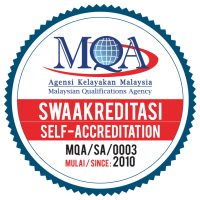WUF9 Side Event on Social Inclusion & B40 Communities, 10 February 2018
KITA-UKM’s research was featured at the World Urban Forum yesterday on February 10, 2018 from 2pm to 3pm in a Side event which was held at the Kuala Lumpur Convention Centre, Room 409. Datuk Dr Denison Jayasooria, Lead Researcher on Bottom 40 Flat dwellers moderated the side event with five Malaysians and three foreigners making brief interventions. About fifty people participated from different countries.
Datuk Denison highlighted that all the WUF9 participants have only witnessed the beautiful parts of the city of KL especially the twin towers and the surrounding prosperous parts of the city. He noted that there was another side of the city namely the urban poor and bottom 40 communities and the neighbourhoods they live in. He said that both the Sustainable Development Goals – SDG10, 11 and 16 have direct relevance to this theme including the New Urban Agenda’s thrust on local participation and multi stakeholder engagement.
Among the Malaysian speakers were Mr James Raj a field researcher who shared the findings of four high rise flat communities undertaken by KITA-UKM, noting the local issues and the solutions undertaken by the local communities in addressing them. His major thrust was that local grassroots leaders know the local issues as well as the solutions, our role is to assist and support them. The is a need to shift from problem identification to problem solving with the local people as key partners.
Puan Habibah Jaffar of the Department of National Unity & Integration, a federal (Central agency) who had funded the KITA-UKM research and adopted the findings as its flagship program in empowering local urban communities in resolving local issues. The department funded the research, organised and funded capacity building programs as well as funded local communities in carrying out local community problem solving activities. The department has a long history of organising neighbourhood safety communities which are now being reorganised with a boarder community development agenda.
Two local grassroots leaders from two different neighbourhoods shared their experiences – sharing both their challenges as well as success in community mobilisation. Mr Harris of the Sri Pahang Bangsar flats shared of youth related issues such as drugs and efforts by local neighbourhood to address them. Likewise Mr Raja of the Hang Tuah flats shared of issues operating to garbage, vehicle parking and crime at the neighbourhood level. He shared of community efforts in solving these.
Another government staff Puan Rafidah who is at the district level shared of their efforts to engage all relevant agencies in addressing specific concerns such as engaging with the Police on crime, the anti-drug unit on drugs and the local council on garbage clearance. She noted the multi-dimensional nature of local issues and the need for multi-agency or inter-agency cooperation in partnership with local community leaders. including local government.
With these Malaysian reflections, Datuk Denison called on three foreign guests to make brief comments of the Malaysian case studies of the B40 in urban centres.
Prof Michael Cohen of the New School, New York observed that the everyday issues of the city are not well featured in the New Urban Agenda and should be a key focus from now on. He noted that many of the issues are similar to other cities like New York. He commended the work of grassroots leaders but also called for the review of high rise living as many cities like New York have demolished all the old ones as it difficult to resolve the many issues.
Mr Rajen Samuel of Habitat for humanity, India observed that ‘change agents’ were the catalyst for transformation. The panel revealed that there were such local actors and called on efforts to document social mobility as the B40 must graduate out into the M40 neighbourhoods not remain permanently in the B40 category.
Ms Laurence Wark of the Global Social Economy Forum, South Korea highlight the need to empower local communities from a focus on daily issues into social economic activities which can strengthen their socio-economic position. She highlighted the social solidarity initiatives of Seoul city. She also noted that the social network in the communities were strong and this was an asset for community building.
Within an hour the KITA-UKM and the Unity department officials had impressed the participants that there is another side to the city. The urban poor and people living at the bottom have the capacity to change their environment. The call and challenge to city planners is not to ignore this section of the city.
There is an urgent need to foster stronger institutional mechanisms to enhance democratic rights and accountability so that grassroots people living in the city can have a better quality living as well as ensuring no one in the city is left behind.


